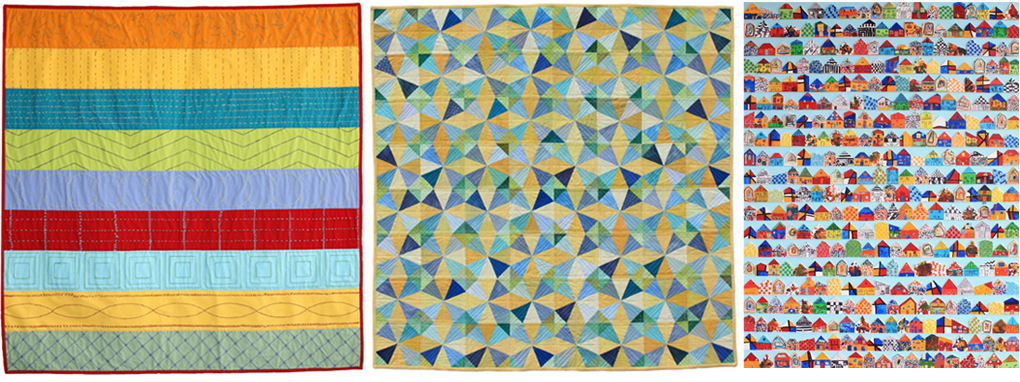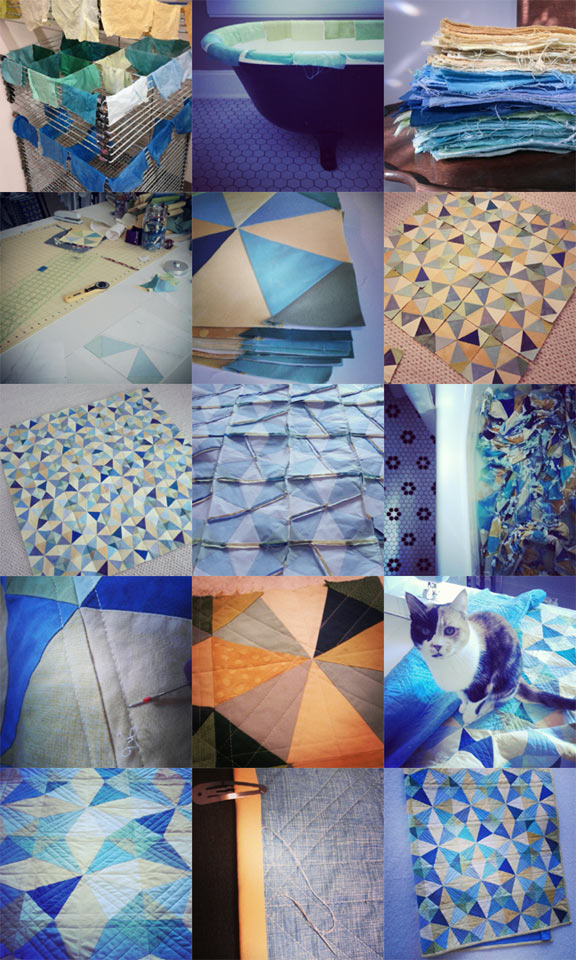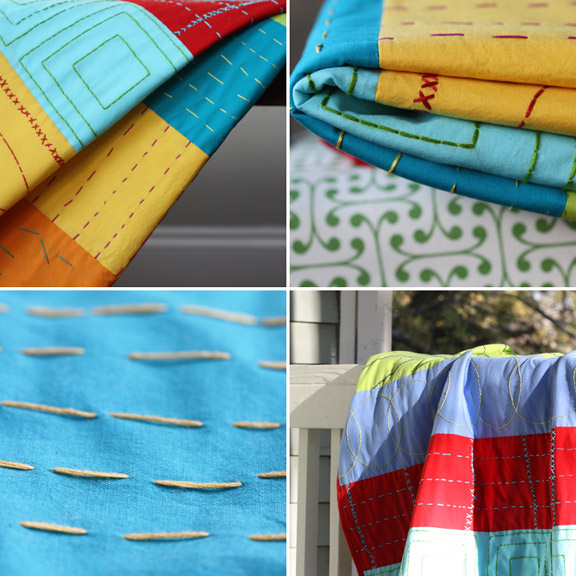
Ellen Luckett Baker helped organize student-created projects for three years of school auctions.
Photo courtesy of Ellen Luckett Baker
I sewed a white linen horse with a colorful mane and tail and dropped it off, along with my business card, a few weeks later. I was selling similar horses in my Etsy shop for $60 and figured this one would bring in even higher bids, which would mean a nice donation to the school.
The day after the auction, the woman who got the winning bid came up to me with much excitement. “I got your horse!” she said. “And I got it for a song!” She’d paid just $18.
This experience was disappointing for me in several respects. First, the school got such a tiny amount of money from my contribution. And second, after the auction was over I didn’t hear from anyone. Not a single new order came in.
One common misconception among auction organizers is that artists can take a tax deduction on the fair market value of the item they donate, but this is incorrect. Accountant Allison Rosen explains: “Items donated for charity auctions can be used as a tax deduction up to the amount of the materials used to make the item. If you donate a quilt for auction, the cost of the items used to make the quilt itself (and not your labor) is the amount of your donation according to the IRS.”
With such a small tax deduction it’s important for artists to carefully consider how they might make the most impact with their donation, both for the organization and for their own careers.
1. Consider donating an experience instead of a finished piece
Consider donating a group lesson or art party or offer a guided tour of a local museum or shopping district. These kinds of experiences allow you to interact directly with the winning bidders and help to build word-of-mouth referrals for your business.
When the auction committee approached me again the following year I decided to offer a one-hour, in-home sewing lesson, a service for which I typically charge $60. A mom in my neighborhood got the winning bid at $120 and after the lesson she told several of her friends and I was able to book three more clients from her referrals.

A few snapshots show the work involved with creating the Kaleidoscope quilt.
Photo courtesy of Ellen Luckett Baker
2. Create a basket or bundle and include your handmade item
Knitwear designer Allyson Dykhuizen had a great experience with a fundraiser in which she donated her handmade work to a basket containing other related items. “I knit a baby sweater. It was included in a baby basket with other baby things,” Dykhuizen says. “It bid up to $1,500 all together, which was way over double what the basket was worth.”
3. Have a collector buy a piece and donate it
Although you can only deduct the cost of materials for a piece of art you make and donate, a collector can deduct the fair market value for a piece they donate. Ask a donor to the organization that is holding the fundraiser to buy a piece from you and donate it to the auction.
4. Organize a group-made project.
When multiple people are involved in a project you can generate buzz and the item is likely to bid higher than something made by a single artist. Quilter Melanie McNeil contributed a block to a group quilt and was impressed with how well it did at the auction where it was sold.
“A number of people made and donated blocks. I assembled the top and back, and a very talented woman quilted it. It was auctioned and ultimately sold for more than $10,000. It was then donated to the organization to display,” McNeil says, adding that many quilts — even beautiful, high-quality bed quilts — often bring in just a couple hundred dollars at these types of auctions.
5. Get to know the audience and create something they would appreciate
Quilter Ellen Luckett Baker learned this the hard way.
“We had an all-school quilt that the kids would help create, but after I worked on it for two years with low selling prices we realized that perhaps people just weren’t interested in quilts,” Baker says. “This appeared to be the right move because the next year, our houses art project sold for over $5,000.”
To target your donation to the intended audience, Baker recommends considering the size and functionality of your artwork.
“Ask yourself, ‘Where will they hang it? What’s their style?’” she advises.

The houses art project.
Photo courtesy of Ellen Luckett Baker
6. Set a minimum bid
Waugh, the art quilter, has a method for coming up with an appropriate minimum bid for her work.
“My work is currently priced at $3.50 per square inch. If I sell to an art consultant or gallery, I give them a 50 percent commission, so I would make $1.75 per square inch. Because this is a donation, I will set a minimum price of $1 per square inch. If no one bids on it, the artwork is returned to me,” she explains.
For Waugh, setting a minimum bid is a must.
“My rationale is that this is a fundraiser. Not a garage sale,” she says. “I think people’s expectation on bidding in a silent auction is that they get a ‘deal.’ That’s what makes the price lower. It’s not about raising money for the cause, it’s about getting that meal or massage at 50 percent off retail!”
7. Be sure you have an opportunity to display your marketing materials
Fundraisers are often run by volunteer staff and sometimes that staff changes year to year. You can politely educate the organizers about what you need and request that your marketing materials be included in email blasts, auction pamphlets and on the actual table next to your work. If there’s an online component to the auction, ask that your item description include a direct link to your website.

8. Require that you get the contact information of the final bidder
Many times, artists are frustrated when auction organizers don’t share the name or contact information of the winning bidders.
“The nonprofits I donated to refused to send me an acknowledgement of how much my piece sold for or who the buyer was so I was unable to … follow up with a potential buyer of another piece of my work,” Waugh says.
Before donating, make it clear to the auction organizers that you’ll need this information after the fundraiser ends.
One way to ensure that you’re able to get in touch with the winning bidder is to auction a certificate toward a piece rather than the piece itself. The winning bidder then needs to visit your studio to choose the piece they want.
9. Instead of donating an auction item, donate your services to the auction committee
Consider lending your artistic skills or marketing know-how to the fundraising committee in lieu of donating a piece of your work. Creating a compelling logo or graphic or helping to promote the event effectively can be just as valuable as donating your handmade goods.
10. Set a charitable-giving budget for yourself and stick to it
Set an allotment of how much of your work you can donate to charity in a given year. Once the allotment is used up, it’s OK to say no to requests for donations. Explain that the organization should get in touch with you early next year when you’ll have more to give.

These are all excellent points. Over the last 35 years I have donated thousands of dollars worth of artwork to good causes, and the issues that come up are exactly as you describe. I would add a couple of ideas to the mix:
1. Ask about the marketing plan for the event. Will there be a program printed, ads, or a preview party? If so, ask to have your name displayed and ask for an invitation to the preview. Your donated work should be displayed to attract pre-bids, and you can socialize with attendees.
2. Ask how much lead time has been allowed for publicity and planning. If the auction is “next week,” you will know that it is not a well planned event and your name or company will likely not be included in any pre-printed program or display ads.
Brilliant. All of it. I recently set up a personal donation policy and posted it on my website. I’m hoping to manage expectations from those who ask for donated art and help them understand that the dynamic between creatives and organizations needs to change. Tips like these can help do that and both parties can benefit. Thank you!
Some great food for thought, thank you! Do the same charity donation deductions also apply to products donated to charities for them to actually use, i.e. quilts to a children’s hospital?
Hi Alyce! Great question – and yes, the same deductions apply.
Great post, much appreciated!
I am starting up a small business. I am offering a sewing project class for up to 8 people at $60/each (includes materials). They sign up for the given day at the given price (this is a format that has worked well at this auction in the past). I hope to get to meet 8 interested people who might be interested in future classes or materials, to get their contact information, to learn from them what projects they might be interested in in the future. I plan to be there the night of the auction and offer a second session if there seems to be enough interest. Do you know how the donation deduction would work in this situation.
Your time is not deductible. Only cost of materials and, if applicable, mileage at charity rate
Excellent article. Wish I thought about this years ago. Every facet of it makes perfect sense. Thank you for educating me.
This post has a negative feeling. I’m happy to donate and let go of my donation without considering either the result or my own reward. It is ironic that my own most successful donation strategy doesn’t appear on the list. I always have items that haven’t sold as quickly as others. I’m happy to donate the slow movers. We all have something that isn’t flying out the door. Donating those items makes good business sense and helps a charity.
Great article. As a long armer, I am often requested to donate my quilting services because the quilt is for charity. I have heard too many horror stories of quilters that agreed and did a fabulous job and now the quilt is too good for the charity and the person keeps the quilt and donates some other quilt! One time I donated a baby quilt for a fundraiser and they sold it for $10, which didn’t even begin to cover just the materials. I think the suggestions in this article are spot on.
What a great article. I have found that offering a gift certificate for one of my home paintings has been a hit. If they want a larger painting they pay the difference of what the size the certificate is for. I create an attractive sign explaining the process, and an example of the painting.